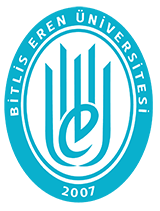Caffeine Coated Iron Oxide Crustacean for Ammonia Borane Dehydrogenation Development of Magnetic Nickel Nanoparticles
Abstract
The aim of this study was to develop nickel (Ni) nanoclusters with caffeine-coated magnetic iron oxide (Fe3O4) center shells for the catalytic hydrolysis of ammonia borane (AB). In the study, magnetic iron oxide (MIO) clusters were obtained by hydrothermal treatment. These clusters were first coated with caffeine according to the reflux method at 150 oC for 12 hours, and then Ni was decorated on these clusters by impregnation method. Magnetic Ni catalyst (Ni@C/Fe3O4) was synthesized by dropping 10 M 20 mL sodium borohydride (NaBH4-SBH) into the Ni-C/ Fe3O4 magnetic nanoclusters in solution as a result of the loading processes carried out at room conditions. After filtration, washing and drying in nitrogen atmosphere, the crumbled catalyst was identified by advanced identification techniques (FT-IR, BET, SEM, EDX, XPS) and used in AB hydrolysis.
The solvate medium, catalyst amount, AB concentration, temperature and repeated use parameters were investigated for AB catalytic hydrolysis. As a result of the optimization at 303 K, the best hydrogen production was determined as 7873 mL/g.min using 2.5 % NaOH, 30 mg catalyst and 300 mM AB. The catalyst cycle frequency (TOF) was measured as 1447 s-1. As a result of reaction kinetics investigations, it was determined that the reaction was 1st order and the reaction activation energy was 35.07 kJ/mol.
Collections

DSpace@BEU by Bitlis Eren University Institutional Repository is licensed under a Creative Commons Attribution-NonCommercial-NoDerivs 4.0 Unported License..













